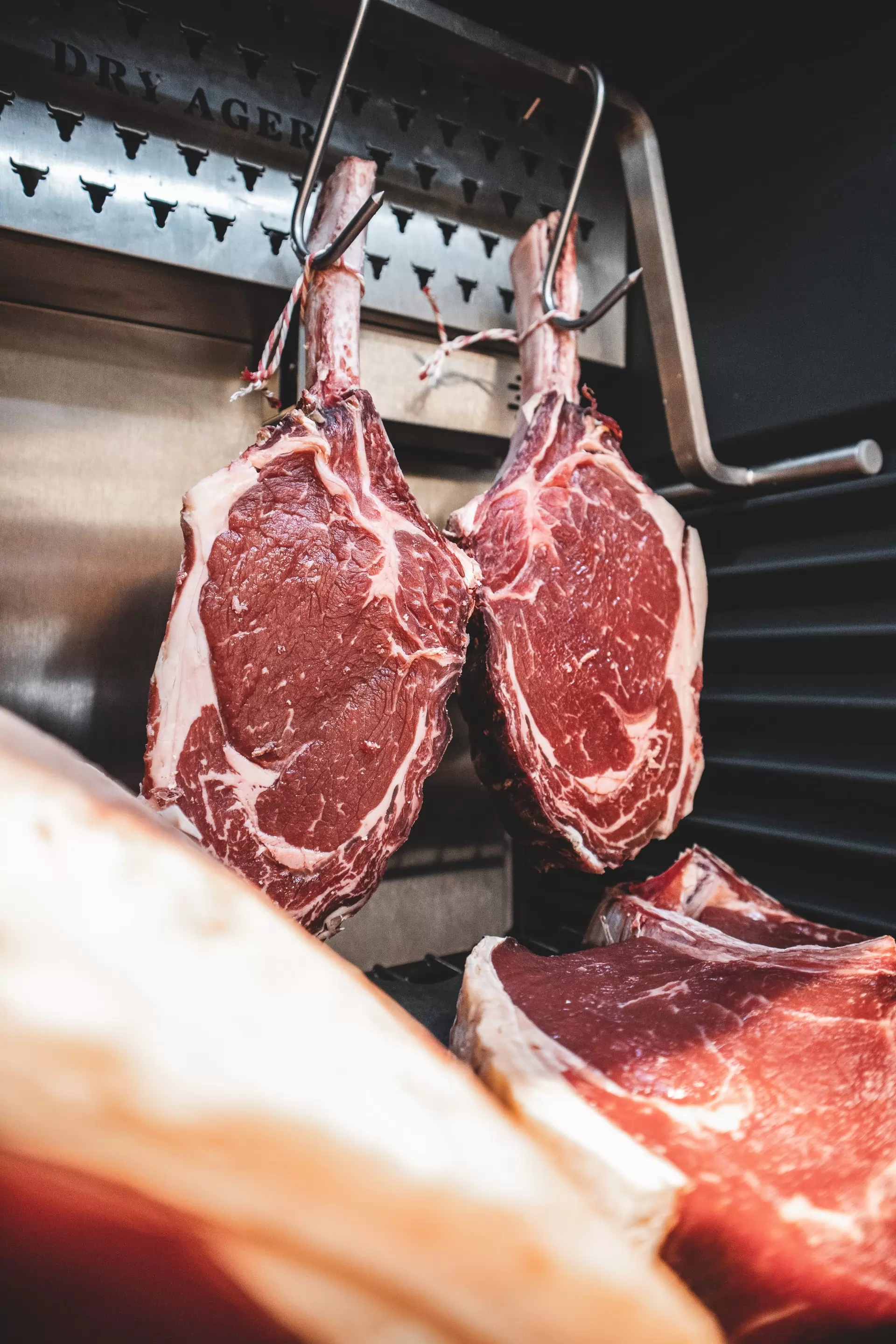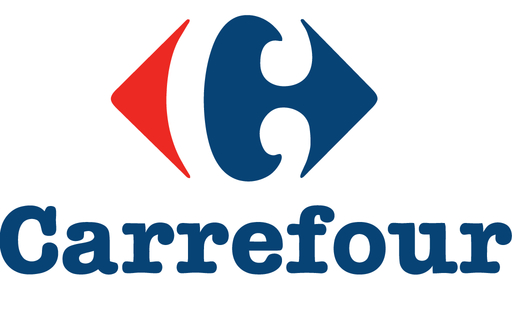Summary
to understand this market
Detailed content
 Inforamtion
Inforamtion
- Number of pages : 30 pages
- Format : Digital and PDF versions
- Last update : 09/06/2023
 Summary and extracts
Summary and extracts
1 Market overview
1.1 Definition and presentation
Meat is a food composed of the muscle fibers of animals. A distinction is traditionally made between white and red meat, and the term may or may not include fat.
The global meat market is growing fast. It is driven by growing demand from emerging countries, where rising living standards are boosting consumption. The world's leading meat-producing region is now Asia, far ahead of Europe, followed by South America and North America. The global meat market exceeds 800 billion dollars, and growth forecasts point to solid prospects for the years ahead. Poultry meat consumption is the most dynamic, and today represents the world's leading market in terms of volume, ahead of pork and beef.
In Spain, meat production reaches nearly 8 million tons per year, and accounts for over 20% of sales in the food sector as a whole. The sector employs almost 100,000 people, mainly in rural areas, which are more suited to this activity. Pork production dominates the Spanish meat industry by far, with more than 5 million tonnes a year, representing around two-thirds of the country's total production. Exports continue to grow in importance, with over 2 million tonnes exported outside the European Union. On the domestic market, butchers and traditional stores remain of key importance, accounting for around a quarter of sales, behind supermarkets and ahead of hard discounters.
1.2 The global meat market
The global meat market was estimated at $***.* billion in ****, and is expected to grow at a CAGR of +*% over the period ****-****.
World meat market size World, ****-*****, in billions of dollars Source: ****
Global meat production is estimated at ***.* MTEC.
World meat production by region World, ****, in millions of tons of ...
1.3 Overview of the Spanish meat market
Meat market size Spain, ****-****, in billions of euros Source: ****
In ****, meat purchases by Spanish households will fall by **.*%, equivalent to sales *.*% lower than the previous year. A comparison with the pre-pandemic situation shows that the volume of meat consumed fell by *.*%, while its value rose by *.*%. The average price for ...
1.4 Meat imports and exports in Spain
Evolution of meat imports and exports Spain, ****-****, in millions of dollars Source: ****
Spain is a major meat exporting country, as illustrated by the coverage rate (***), which stands at ***% in ****. Between **** and ****, Spanish meat exports are set to grow very strongly.
To give you an idea of Spanish exports, here are ...
2 Demand analysis
2.1 Spanish meat consumption
Consumption trends :
Evolution of fresh meat consumption Spain, ****-****, in millions of tons Source: MAPA In ****, demand for fresh meat fell by **.*% year-on-year. Sales also fell, but less sharply, by **.*%. Compared to the year before the pandemic, the volume purchased fell by *.*%, while its value rose by *.*%. The average price of ...
2.2 Poultry meat consumption
Poultry meat consumption trends Spain, ****-****, in millions of kilograms Source: ****
This statistic shows the evolution of the total volume of fresh chicken meat consumed in Spanish households over the period from **** to ****. Consumption of fresh chicken meat in Spain has fallen by almost ** million kilograms in ****, settling at around *** million ...
2.3 Beef consumption
Trends in beef consumption Spain, ****-****, in millions of kilograms Source: ****
This statistic shows the total volume of fresh beef consumed in Spanish households between **** and ****. In ****, around ***.* million kilograms of this type of meat will be consumed in Spain.
Trend in annual amount spent on beef Spain, ****-****, in euros Source: ...
2.4 Pork consumption
Pork consumption trends Spain, ****-****, in millions of kilograms Source: ****
This statistic shows the total volume of fresh pork consumed per year in Spanish households between **** and ****, in millions of kilograms. Household consumption of fresh pork amounts to around ***.* million kilograms in ****.
Trend in annual amount spent on pork Spain, ****-****, ...
3 Market structure
3.1 Meat market structure
Market overview
RHD: Restauration Hors Domicile
GMS: supermarkets and hypermarkets
[***] Growth in pork production per year Spain, ****-****, in millions of tons Source: ****
from **** onwards, the volume of pork produced in Spain has gradually increased, reaching over five million tonnes in ****. In ****, the volume produced will rise to almost *.* million ...
3.2 Companies and jobs in the meat sector in Spain
Number of companies in the meat sector Spain, ****-****, in units Source: ****
In Spain, the meat industry counted over *,*** companies in ****, but this number declined steadily over the period to reach its lowest figure in ****. That year, the sector counted around *,*** companies active in the country.
Number of employees in the ...
3.3 Distribution
All meats :
Breakdown of fresh meat sales by value and distribution channel Spain, ****, in Source: ****
In ****, supermarkets and traditional stores in Spain were the distribution channels with the highest percentages of fresh meat sales. Specifically, around **% of the fresh meat consumed in the country that year was bought in these types ...
3.4 Geographical distribution of livestock
In ****,Aragon was the Spanish region with the largest pig herd in the country. Specifically, it had over *.* million head. Catalonia and Castilla y León came second and third respectively.
This map shows data for the Spanish cattle population in the various autonomous communities in ****. Castilla y León was ...
4 Offer analysis
4.1 The main meat price indices in Spain
Average selling price of fresh meat by distribution channel Spain, ****, in euros per kg Source: ****
in ****, the average price of fresh meat in Spain was almost *.* euros per kilo. While in supermarkets and discount stores, a kilo of fresh meat cost less than the national average, in traditional stores, the average ...
4.2 The main price indices on the Spanish poultry meat market
Poultry meat price trend Spain, ****-****, eu euros per kilogram Source: ****
This statistic shows the evolution of the average price of chicken meat in Spain between **** and ****, in euros per kilogram. The average price per kilogram of this poultry meat has risen by almost ** centimes since the beginning, reaching around *.* euros ...
4.3 Main price indices for the Spanish beef market
Beef price trend Spain, ****-****, eu euros per kilogram Source: ****
This statistic shows the evolution of the average price of beef in Spain between **** and ****, in euros per kilogram. Over the period measured, the average price of this type of meat rose gradually until reaching its highest level in the last ...
4.4 Main price indices for the Spanish pork market
Pork price trend Spain, ****-****, eu euros per kilogram Source: ****
This statistic shows the evolution of the average price of pork in Spain between **** and ****, in euros per kilogram. starting in ****, the average price of this type of meat has gradually risen to over six euros, reaching *.** euros in ****.
Average selling ...
5 Regulations
5.1 European regulations on animal welfare
According toCarnicato date, all pig farms in Spain comply with the European regulation on animal welfare, which came into force on January *, ****. The aim of this regulation is to establish minimum standards for the protection of pigs, while helping to improve and maintain the competitiveness of livestock exports, creating a higher-quality ...
6 Positioning the players
6.1 Player segmentation
- Carrefour Groupe
- Mercadona
- Cefu Sa
- Piensos Costa
- Corporación Alimentaria Guissona S.A. (bonÀrea Agrupa)
- Grupo Vall Companys
 List of charts
List of charts
- Poultry meat consumption trends
- Evolution of the annual amount spent on poultry meat
- Trends in fresh beef consumption
- Evolution of the annual amount spent on beef
- Pork consumption trends
All our studies are available online in PDF format
Take a look at an example of our research on another market!
Latest news
Companies quoted in this study
This study contains a complete overview of the companies in the market, with the latest figures and news for each company. :
 Choosing this study means :
Choosing this study means :
Access to more than 35 hours of work
Our studies are the result of over 35 hours of research and analysis. Using our studies allows you to devote more time and added value to your projects.
Benefit from 6 years' experience and over 1,500 industry reports already produced
Our expertise enables us to produce comprehensive studies in all sectors, including niche and emerging markets.
Our know-how and methodology enable us to produce reports that offer unique value for money.
Access to several thousand articles and paid-for data
Businesscoot has access to all the paid economic press as well as exclusive databases to carry out its market research (over 30,000 articles and private sources).
To enhance our research, our analysts also use web indicators (semrush, trends, etc.) to identify market trends and company strategies. (Consult our paying sources)
Guaranteed support after your purchase
A team dedicated to after-sales service, to guarantee you a high level of satisfaction. +44 238 097 0676
A digital format designed for our users
Not only do you have access to a PDF, but also to a digital version designed for our customers. This version gives you access to sources, data in Excel format and graphics. The content of the study can therefore be easily retrieved and adapted for your specific needs.
 Our offers :
Our offers :
the meat market | Spain
- What are the figures on the size and growth of the market?
- What is driving the growth of the market and its evolution?
- What is the positioning of companies in the value chain?
- Data from several dozen databases
5 reports pack (-15%) ES Spain
- 5 reports at €75.6 excluding VAT per study to choose from our Spanish catalogue for 12 months
- Save 15% on additional studies purchased
- Choose to be refunded any unused credit at the end of the 12-month period (duration of the pack)
See the terms and conditions of the pack and the refund of unused credit.






 80 Carrefour hypermarkets operated under franchise or leasing agreements - 14/11/2023
80 Carrefour hypermarkets operated under franchise or leasing agreements - 14/11/2023

















